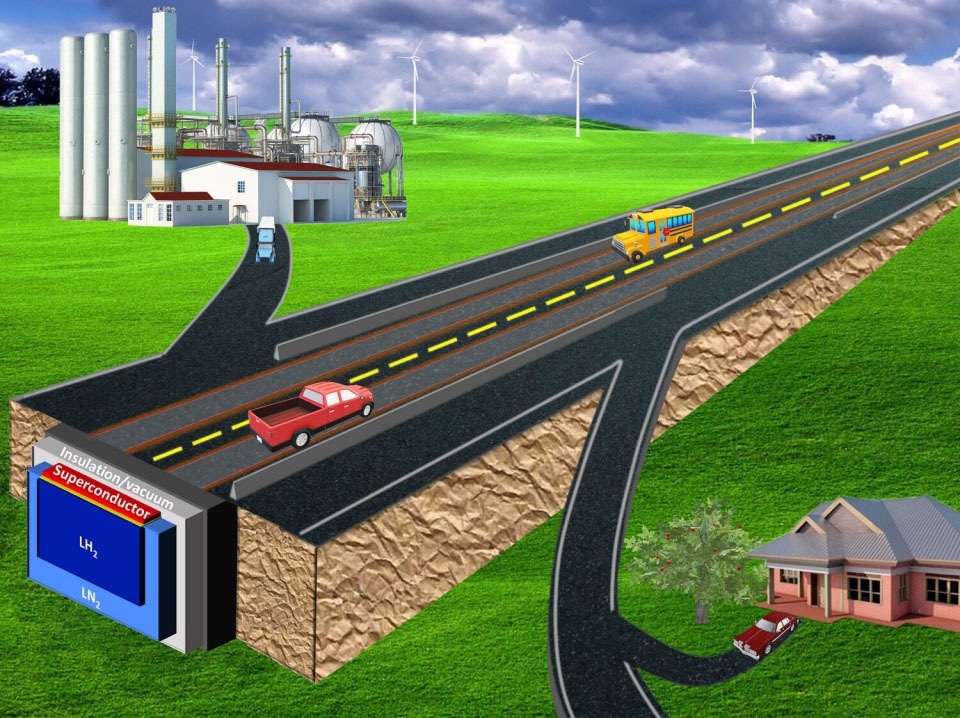Superconductors can transmit electricity without resistance or loss of power, and they can easily cause magnets to levitate above them. These features would make superconductors excellent for high-speed trains or long-distance power transmission, except for one major flaw: superconductors can only operate at extremely low temperatures, more than a hundred degrees below zero.

Schematic illustration of the superconducting highway for energy transport and storage and superconductor levitation for the transport of people and goods. Image Credit: Vakaliuk et al.
Constructing a hyperefficient electrical grid or high-speed rail network is prohibitively expensive due to this solitary requirement unless a superconductor network can perform both duties simultaneously.
Scientists from the University of Houston, Adelwitz Technologiezentrum GmbH, and the Leibniz Institute for Solid State and Materials Research created a proof of concept for a superconducting highway that could transport vehicles and electricity while cooling the necessary superconductors with a liquid hydrogen pipeline in APL Energy, published by AIP Publishing.
In most magnetic levitation designs, the superconductor is usually located inside the vehicle and suspended above a magnetic track. The authors opted to reverse the configuration, placing the superconductor on the ground and equipping each vehicle with a magnet. The outcome of this is a system with multiple uses, placing it within the realm of affordability.
Study author Zhifeng Ren says, “Superconductor-levitated magnetic vehicles, instead of magnet-levitated superconducting vehicles, can provide additional benefits such as electrical power transmission and storage. We developed a new superconducting system that can transport and store a huge amount of energy and also transport people and goods with speeds of at least 400 miles per hour.”
With a liquid hydrogen pipeline, they addressed the problem of superconductor cooling. As hydrogen is a gas at normal temperature, transporting and storing it requires either risky pressurized tanks or expensive cryogenic temperatures. The cost of cooling the superconductor and transferring hydrogen are the same under the team’s proposal.
They established that various applications can coexist in the laboratory using a scale model, and they now intend to develop a full-size demonstration. The researchers have envisioned their system sitting underneath existing highways to make use of the current infrastructure.
“People can drive onto the superconducting highway any time without waiting for a train or airplane, and modifying the existing highways means there is no need to acquire land for the tracks. With enough financial support, we could make a working system over a relatively short distance, like from Houston to Austin,” Ren concludes.
Journal Reference:
Vakaliuk, O., et al. (2023). A multifunctional highway system incorporating superconductor levitated vehicles and liquefied hydrogen. APL Energy. doi.org/10.1063/5.0139834.